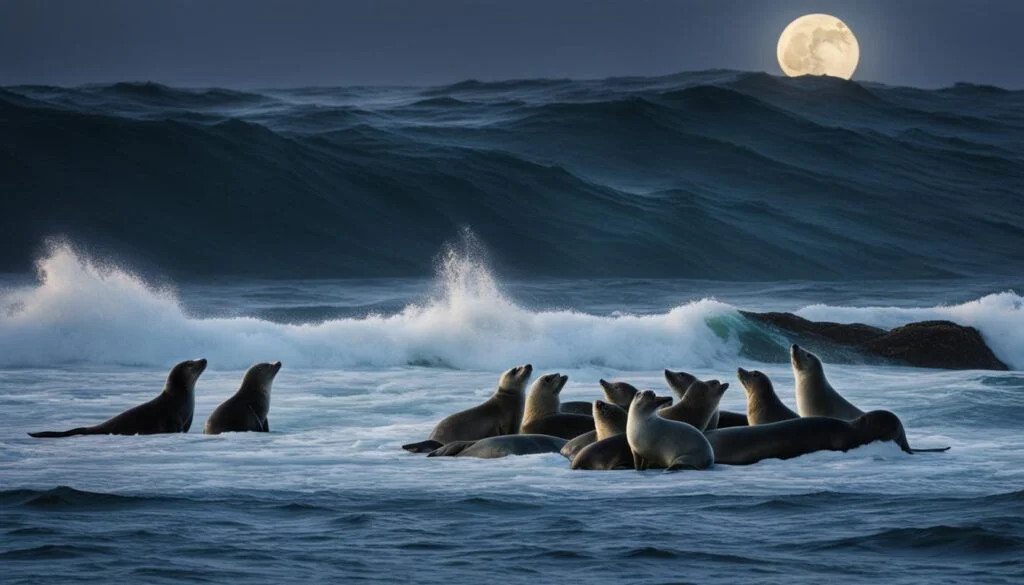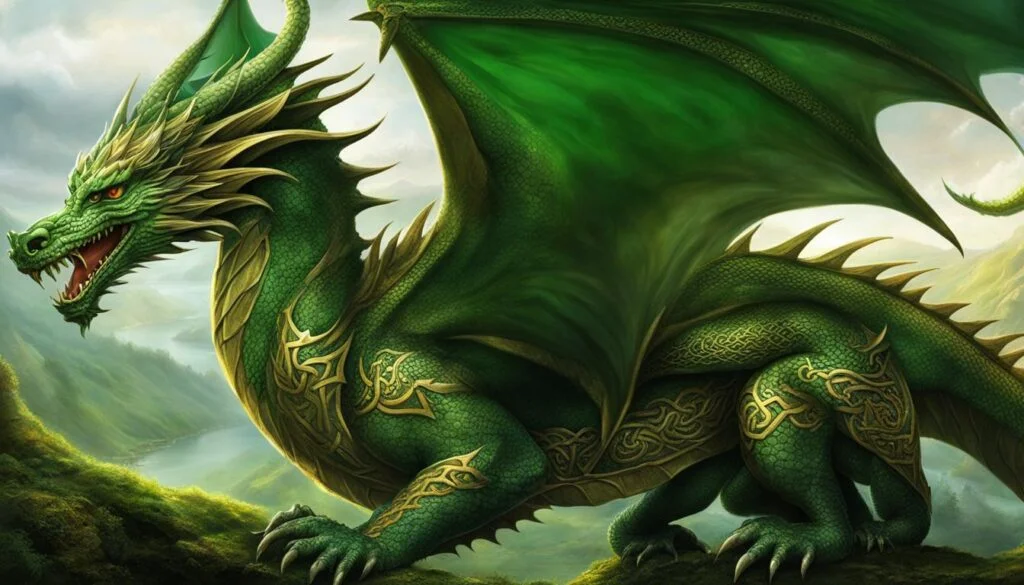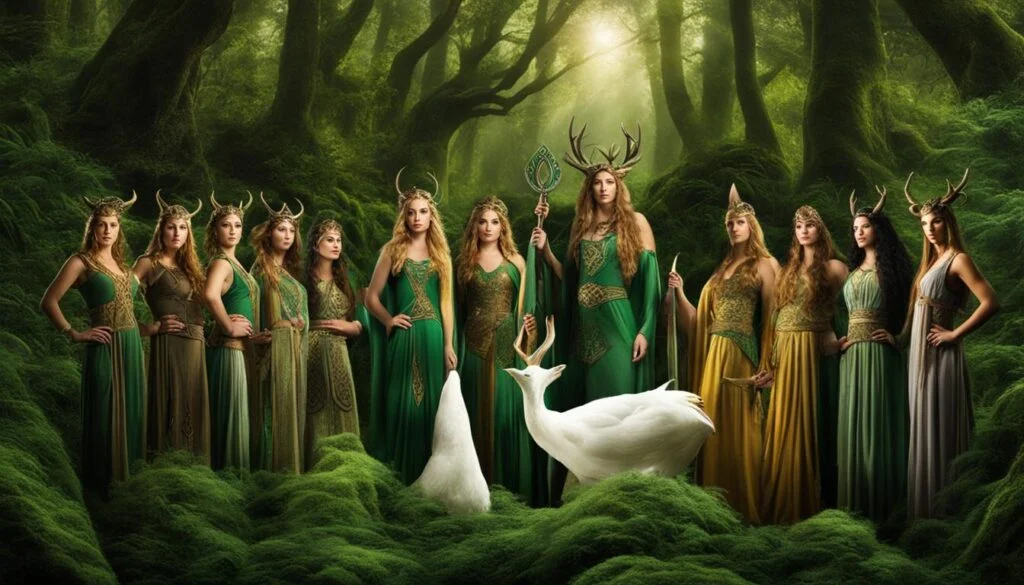Selkies, also known as mermaids in Celtic mythology, are legendary beings that have a prominent place in the folklore of Scotland, Ireland, and other Celtic regions. They are shapeshifters, able to transform between seal and human forms by shedding or putting on their seal skin. Selkies are often depicted as beautiful and seductive creatures, and they are known for their enchanting songs and dances. They play a significant role in tales of love, loss, and the connection between humans and the sea.
Key Takeaways:
- Selkies are legendary shapeshifting beings in Celtic mythology.
- They can transform between seal and human forms by shedding or putting on their seal skin.
- Selkies are often associated with love, loss, and the connection between humans and the sea.
- They are depicted as beautiful and seductive creatures with enchanting songs and dances.
- Selkies have a significant presence in the folklore of Scotland, Ireland, and other Celtic regions.
The Legend of Selkies in Celtic Mythology
Selkies, also known as mermaids in Celtic mythology, are mythical creatures that hold a prominent place in the folklore of Scotland, Ireland, and other Celtic regions. These enchanting beings are believed to be half-human and half-seal, possessing the ability to live both in the sea and on land.
The legend of selkies is deeply rooted in Celtic mythology, particularly in the coastal regions of Scotland and Ireland. Selkies are known for their captivating allure, irresistible to ordinary humans who often fall in love with them. They are shapeshifters, able to transform between seal and human forms, a trait that adds to their mystique.
The origin of the selkie myth is believed to be influenced by the encounters between ancient Celtic and Finnish or Sami travelers. These travelers were thought to be selkies due to their use of sealskin clothing and boats, which led to the development of stories and legends surrounding these mythical creatures.
Selkies: Meaning and Origin
- Selkies are mythical creatures in Celtic mythology, known for their ability to transform between seal and human forms.
- Their origin is believed to be influenced by encounters between ancient Celtic and Finnish or Sami travelers.
- The legends of selkies are deeply rooted in coastal regions of Scotland and Ireland.
- Selkies possess a captivating allure, often leading humans to fall in love with them.
- Their shapeshifting abilities and their association with sealskin clothing and boats further add to their mystique.
The legend of selkies continues to captivate audiences with its tales of love, loss, and the intricate connection between humans and the sea. In the following sections, we will delve deeper into the folklore and folktales surrounding selkies, their significance in Irish and Scottish mythology, their symbolism in Celtic culture, and their influence in art, literature, and film.
Selkies in Folklore and Folktales
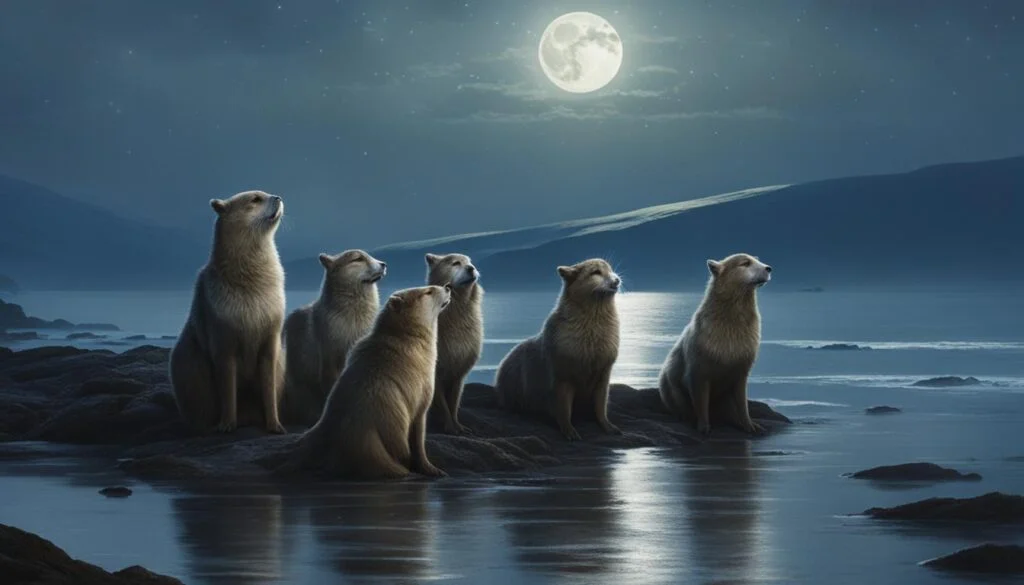
Selkies, with their enchanting tales of love, loss, and the connection between humans and the sea, have woven themselves deeply into the folklore and folktales of Celtic cultures. These captivating stories revolve around the interactions between selkies and humans, exploring themes of longing, transformation, and the inherent desire for freedom.
One common motif in selkie folklore is the hiding of a selkie’s seal skin, which traps them on land and prevents them from returning to the sea. This often leads to relationships between humans and selkies, with marriages and families formed. However, the longing for the sea is ever-present, and selkies ultimately relinquish their human ties to return to their watery home.
The Stories of Selkies
The stories of selkies vary, but they consistently portray the beauty and allure of these mythical beings. Some tales focus on the romantic aspect, depicting the irresistible charm of the selkies and the intense love that humans fall into with them. Others explore the familial aspect, delving into the complexities of raising children who are part human and part selkie.
- Marriages between selkies and humans
- Trapped selkies longing to return to the sea
- Children born from unions between humans and selkies
These folktales have been passed down through generations, captivating audiences with their magical narratives. They not only entertain but also provide insight into the human experience, exploring themes of identity, longing, and the delicate balance between the natural and human worlds.
The Influence of Celtic Folklore
Within Celtic folklore, selkie stories hold a significant place. They reflect the deep connection between Celtic cultures and the sea, as well as the reverence for the natural world. Selkies serve as a reminder of the mysteries and powers of the ocean, enchanting listeners with their songs, dances, and transformative abilities.
- The allure of the sea and the longing for freedom
- The delicate balance between the land and the sea
- The power of nature and the importance of preserving it
Through their presence in folklore and folktales, selkies continue to captivate hearts and imaginations, carrying the ancient wisdom and timeless messages of Celtic culture. Their stories remind us to cherish the beauty of the natural world and to honor the delicate balance between human existence and the wild forces of the sea.
Selkies in Irish and Scottish Mythology
In both Irish and Scottish mythology, selkies hold a significant place as mystical beings associated with the sea. Known as “seal people” or “mermaids” in Ireland, and often sighted in the remote coastal areas and islands, selkies are believed to be half-human and half-seal, possessing the ability to live in both realms. Their enchanting allure and captivating songs have fascinated humans for centuries, resulting in tales of love, longing, and tragedy.
In Irish mythology, the stories of selkies often revolve around the discovery of their shed seal skins. When a human finds and hides a selkie’s skin, it is said to create a bond between them, often leading to marriages and the birth of children. However, the selkies are always drawn to the sea, and their yearning for their true home eventually becomes too strong, causing them to leave their human families behind.
In Scottish mythology, selkies are similarly depicted as shape-shifting beings who can transform between human and seal forms. They are known for their beauty, seductive powers, and mesmerizing songs and dances. Tales of selkies frequently involve humans becoming entranced by their allure, resulting in relationships that often end tragically when the selkies return to the sea, leaving behind heartbroken lovers and families.
The Mythical Beings of the Celtic Seas
- Irish and Scottish mythology both feature selkies, mystical beings who can shift between human and seal forms.
- Selkies are often referred to as “seal people” or “mermaids” in the respective mythologies.
- The stories of selkies in both cultures revolve around themes of love, loss, and the longing for the sea.
- Irish folklore emphasizes the discovery of selkie skins and their connection to human-marriage and family dynamics.
- Scottish folklore focuses on the enchanting allure of selkies and the tragic consequences of human-selkie relationships.
The tales of selkies in Irish and Scottish mythology continue to captivate audiences with their magical narratives, symbolizing the enduring fascination with the relationship between humans and the sea.
Selkies in Scottish Mythology
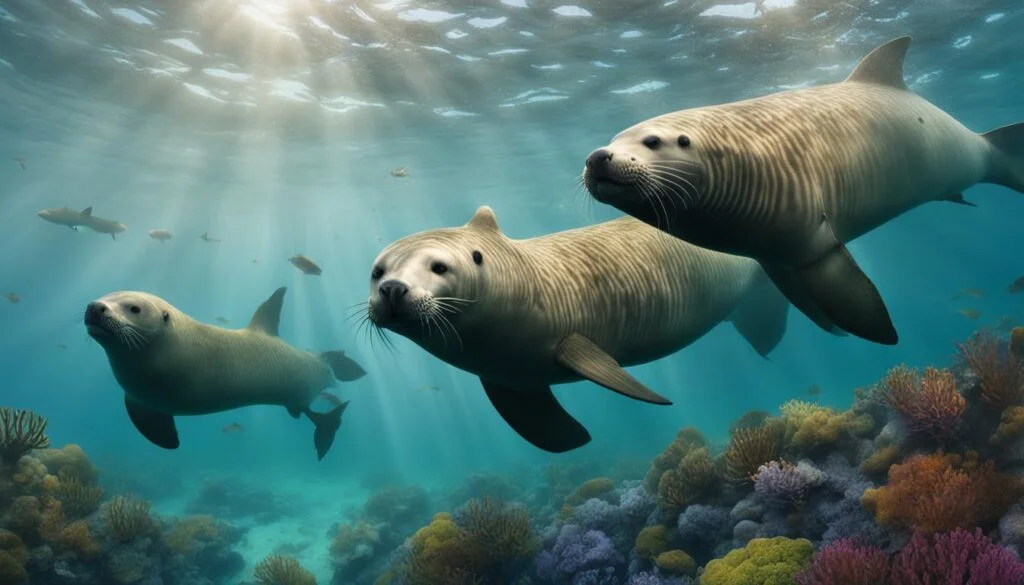
In Scottish mythology, selkies hold a special place, captivating the imaginations of those living in remote coastal communities. Known for their ability to shapeshift between seal and human forms, selkies are often sighted by locals who share stories of their enchanting presence. These mythical beings are described as beautiful and alluring, with the power to captivate humans through their songs and dances. Their appearances often lead to relationships with humans, but these encounters can sometimes have tragic outcomes.
The Beauty and Tragedy of Selkie Tales
Selkie folklore in Scottish culture revolves around stories that highlight both the beauty and tragedy associated with these mysterious creatures. Tales often depict selkies becoming infatuated with humans and entering into relationships, only to experience heartbreak and yearning for the sea. These narratives explore themes of love, loss, and the challenges of straddling the line between two worlds. The haunting allure of selkies in Scottish mythology continues to captivate audiences, serving as a reminder of the powerful connections between humans and the natural world.
The Symbolic Significance of Selkies
In Scottish culture, selkies hold symbolic significance as they represent the delicate balance between the land and the sea. They embody the duality of nature and the longing for freedom and true nature. Selkies serve as a reminder of the power and beauty of the natural world and the importance of respecting and preserving it. Their stories inspire a deep connection to the ocean, evoking a sense of awe and reverence for the wild and unpredictable forces of nature.
The Symbolism of Selkies in Celtic Culture
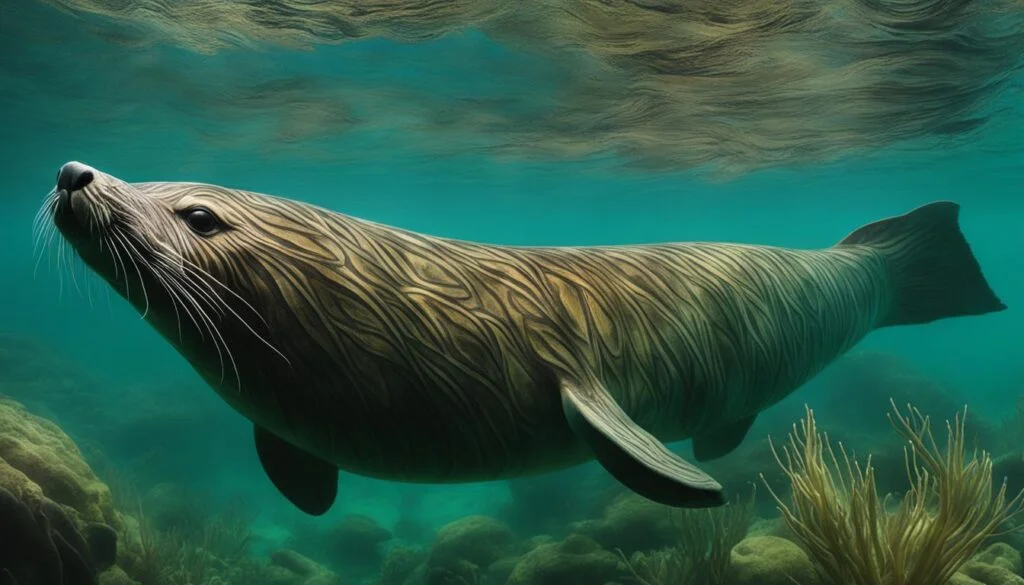
Selkies hold a profound symbolic significance within Celtic culture, representing the intricate relationship between humans and the sea. These mythological beings embody the duality of nature, symbolizing the delicate balance between the land and the ocean. Just as selkies can effortlessly shift between seal and human forms, they remind us of the fluidity and interconnectedness of the natural world.
With their alluring beauty and enchanting songs, selkies capture the imagination and evoke a sense of mystery. They serve as a reminder of the power and allure of the ocean, inviting us to explore its depths and appreciate its vastness. Selkies represent the longing for freedom and the desire to return to our true nature, resonating with our innate connection to the natural world.
The Symbolism of Selkies in Celtic Culture:
- Balance: Selkies embody the delicate balance between the land and the sea, reminding us of the harmony that exists in nature.
- Connection: They represent the profound connection between humans and the ocean, highlighting our interdependence on the natural world.
- Freedom: Selkies symbolize the longing for freedom and the innate desire to embrace our true nature, urging us to live authentically and in harmony with the world around us.
- Respect for Nature: They serve as a reminder of the importance of respecting and preserving the natural environment, including the habitats of selkies themselves.
Through their symbolism, selkies inspire us to appreciate the beauty, power, and fragility of the natural world. They encourage us to connect with the ocean and its majestic wonders, while also reminding us of our responsibility to protect and preserve it for generations to come.
Selkies in Art, Literature, and Film
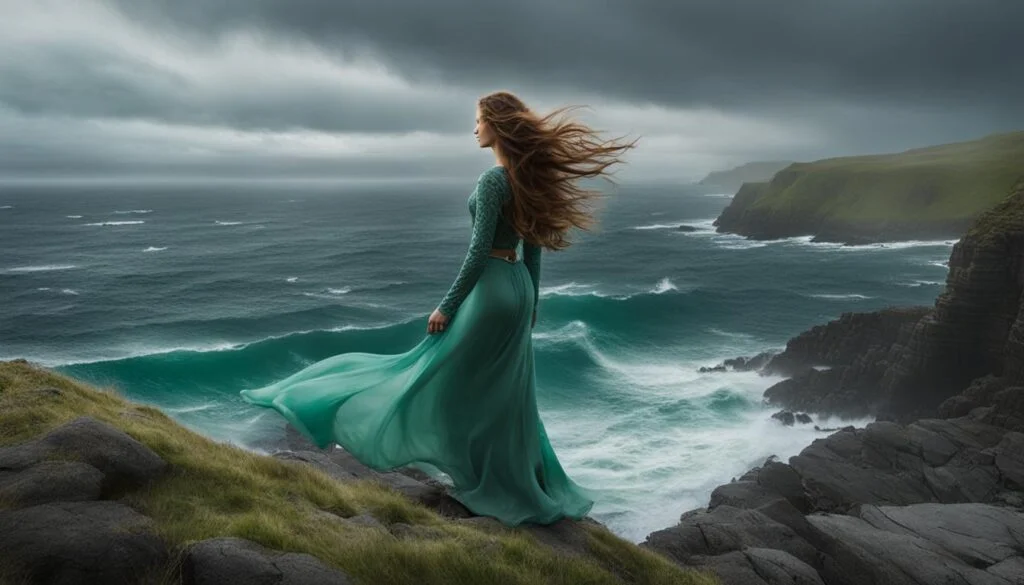
Selkie folklore has long been a source of inspiration for artists, writers, and filmmakers, who have brought these enchanting creatures to life through various creative mediums. From paintings and sculptures to novels and films, selkies have captured the imagination of many, weaving magical tales of love, loss, and the mysteries of the sea.
Selkies in Art
Artists have depicted selkies in stunning visual representations, showcasing their ethereal beauty and their connection to the ocean. Paintings often portray selkies emerging from the sea, their seal skin glistening in the sunlight as they transform into their human form. Sculptures capture their grace and allure, with intricate details that bring these mythical beings to life.
Selkies in Literature
Selkie folklore has found its place in literature, with numerous books and novels delving into the captivating stories surrounding these mythical beings. Authors have explored the themes of love, longing, and the clash between the human and magical realms. Through vivid storytelling, they have introduced readers to the enchanting world of selkies, captivating their imaginations and leaving them yearning for the sea.
Selkies in Film
The allure of selkies has also made its way to the big screen, inspiring filmmakers to create visually stunning and emotionally resonant films. Movies such as “The Secret of Roan Inish” and “Song of the Sea” bring selkie folklore to life with their captivating narratives and breathtaking visuals. These films transport audiences to a world where selkies intertwine with human lives, exploring themes of identity, love, and the deep connection between humans and the natural world.
Through art, literature, and film, selkies continue to enchant us with their timeless tales. They invite us to explore the depths of our imagination, to question the boundaries between reality and myth, and to appreciate the beauty and power of the natural world. Whether through a brushstroke, a written word, or a captivating film scene, selkies remind us of the enduring fascination with these magical creatures and their place in our hearts and minds.
Selkies in Other Cultures
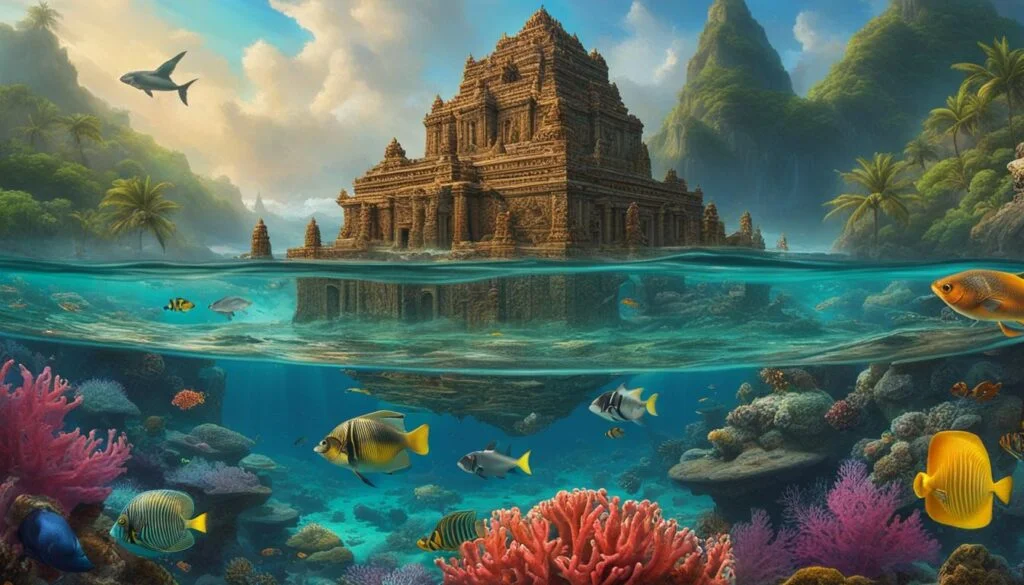
While selkies are most commonly associated with Celtic mythology and folklore, similar mythological beings can be found in other cultures as well. These creatures, often referred to as seal people or mermaids, share similar characteristics with selkies and hold a fascination across different regions.
One such example is the Faroese folklore, where tales of selkies or “selchies” are woven into the culture. These mythical beings are believed to be seals that can shed their skin and take on human form. Stories of selchies often revolve around love, loss, and the longing for the sea.
In Icelandic folklore, there are legends of “selkolla,” which are women who can transform into seals. These stories portray selkolla as enchanting creatures with the ability to seduce humans with their beauty and captivating songs.
Other cultures with selkie mythology outside of Celtic culture include:
- Irish folklore, where selkies are known as “merrows” and are associated with coastal areas and islands
- Manx folklore, which features tales of “seal-women” who can transform between seal and human forms
- Inuit folklore, with stories of “ikiaqtsiit” who are seals with transformative abilities
- Chinook folklore, where there are legends of “nepinak” or seal people
These stories and mythologies from different cultures highlight the universal fascination with the boundary between the human world and the natural world. They offer glimpses into the rich tapestry of myth and folklore that exists across the globe, connecting us through our shared fascination with mythical creatures such as selkies.
Selkies in Outdoor Adventure
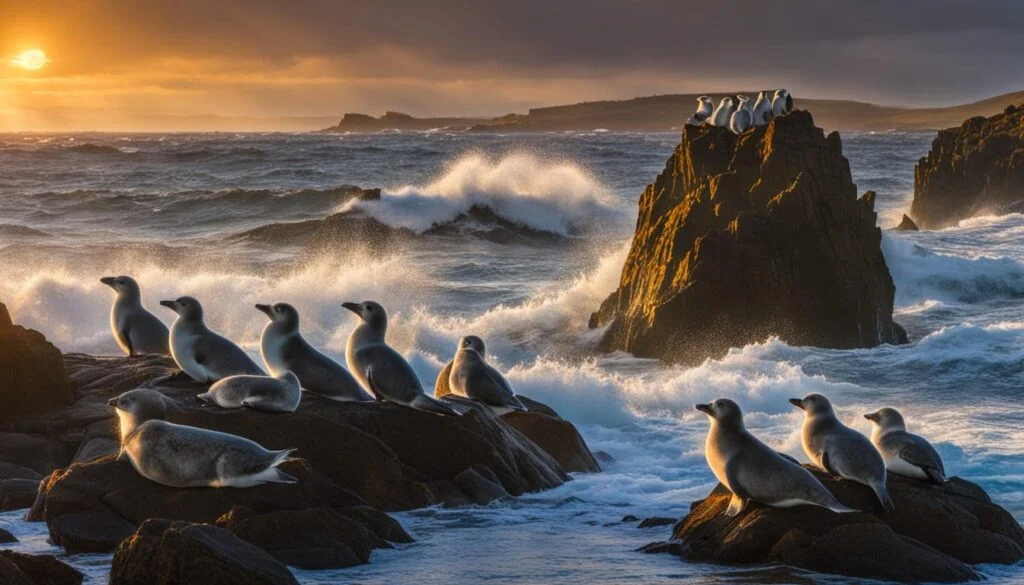
Embrace the spirit of selkies and embark on thrilling outdoor adventures inspired by these mythical creatures. Just like selkies transform between seal and human forms, we too can explore the duality of land and sea through exhilarating activities and experiences.
1. Kayaking: Navigate the pristine coastal waters and immerse yourself in the natural beauty that selkies are believed to call home. Feel the rhythm of the ocean as you paddle along, connecting with the enchanting allure of the sea.
2. Swimming: Dive into the depths of the sea and experience the freedom and fluidity that selkies embody. Channel their grace and elegance as you glide through the water, feeling a profound connection to the marine world.
3. Coastal Exploration: Explore remote coastal areas, just like the selkies are often sighted in. Trek along rugged cliffs, discover hidden coves, and witness the breathtaking landscapes that have inspired countless selkie tales.
Join Us on an Adventure
At Intrepidus Outdoors, we celebrate the spirit of selkies and the magic of the natural world. Our outdoor adventure experiences are designed to evoke the essence of selkies and their deep connection to the ocean. Join us for an unforgettable journey as we explore the wilderness and embrace the wild nature inspired by these mythical creatures.
Selkies in Environmental Conservation
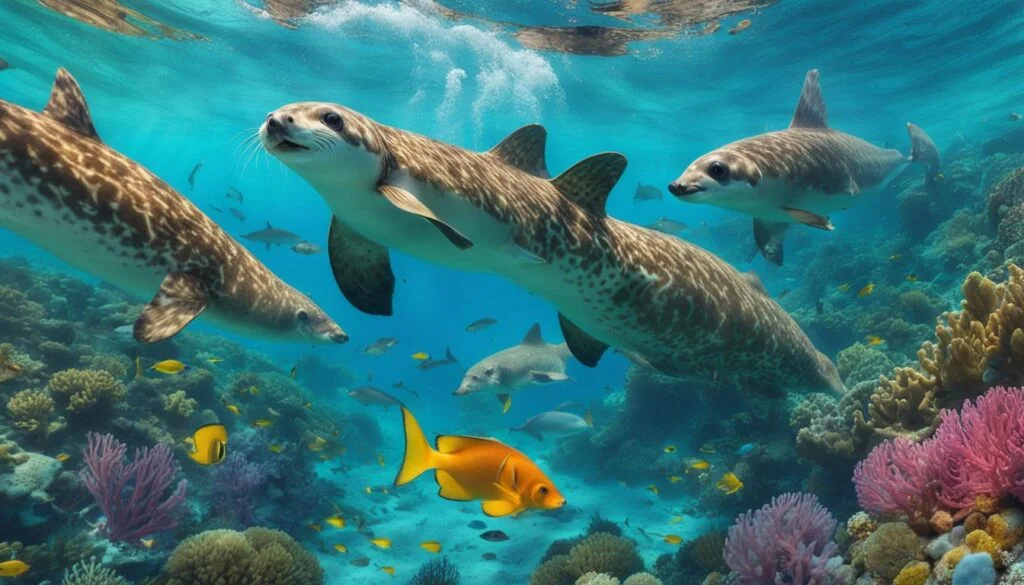
Selkies, as mythical beings deeply connected to the sea, serve as a powerful reminder of the importance of environmental conservation. The habitats of selkies, including coastal areas and oceans, are fragile ecosystems that are vulnerable to human activities and environmental changes. By understanding and appreciating the significance of selkies in Celtic mythology, we can develop a deeper sense of responsibility to protect and preserve these habitats.
Preserving the natural habitat of selkies is crucial not only for their survival but also for the overall health of marine ecosystems. As apex predators, selkies play a vital role in maintaining the balance of marine life. Their presence helps regulate the population of fish and other marine species, contributing to the ecological stability of the oceans.
The Impact of Human Activities
- Overfishing: Unregulated and unsustainable fishing practices can deplete the food sources of selkies, leading to a decline in their population.
- Pollution: Pollution from industrial activities, oil spills, and plastic waste can harm selkies and their habitats, causing long-term damage to marine ecosystems.
- Coastal Development: Urbanization and coastal development can disrupt the natural coastal habitats of selkies, limiting their access to both land and sea.
Conservation Efforts
Efforts are being made to protect selkies and their habitats through various conservation initiatives:
- Marine Protected Areas: Establishing marine protected areas helps safeguard the habitats of selkies and other marine species by limiting human activities and promoting sustainable management.
- Conservation Research: Conducting scientific research on selkies and their ecosystems provides valuable insights into their behavior, population dynamics, and habitat requirements, informing conservation strategies.
- Education and Awareness: Raising awareness about selkies and their importance in Celtic mythology can foster a sense of stewardship among communities, encouraging responsible environmental practices.
By recognizing the significance of selkies in environmental conservation, we can strive to protect and preserve the natural habitats they depend on. Through collective efforts, we can ensure the continued existence of these enchanting creatures and the ecosystems they inhabit, fostering a sustainable future for both selkies and the marine environment as a whole.
Selkies as Symbols of Resilience and Adaptation
Selkies, the enchanting creatures of Celtic mythology, serve as powerful symbols of resilience and adaptation. Their ability to transform between seal and human forms reflects their capacity to navigate and thrive in different environments. Just as selkies gracefully shift between the land and the sea, we too can draw inspiration from their resilience and adaptability when facing challenges in our own lives.
Like the ever-changing tides, selkies embody the strength to endure and overcome obstacles. They remind us that life is a constant journey of adaptation, where we must learn to navigate uncertain waters and embrace new beginnings. The tales of selkies resonate with us because they symbolize the human experience of embracing change and emerging stronger on the other side.
As we face the ever-changing world around us, we can look to selkies as a source of inspiration. They teach us to remain flexible and open to transformation, to embrace the ebb and flow of life’s challenges, and to find strength in our ability to adapt. Just as selkies find their way back to the sea, we too can navigate the currents of change and discover our own resilience.
Conclusion
Selkies in Celtic mythology hold a special place in our hearts, enchanting us with their tales of transformation, love, and the deep connection between humans and the sea. As we explored their folklore and legends, we discovered the magic and wonder that surrounds these mythical creatures.
From the coastal regions of Scotland and Ireland to the remote islands of the Northern Isles, selkies have captured the imagination of artists, writers, and outdoor adventurers. Their stories have inspired beautiful works of art, literature, and even films, bringing their captivating allure to life.
But selkies are more than just mythical creatures. They symbolize the delicate balance between the land and the sea, reminding us of the power and beauty of the natural world. Through their resilience and adaptability, selkies teach us the importance of embracing change and navigating the challenges that life presents.
So let us dive deeper into the realms of selkie folklore, explore the mysteries of Celtic mythology, and continue to be captivated by the enchanting tales of these extraordinary beings.
FAQ
What are selkies in Celtic mythology?
Selkies, also known as mermaids in Celtic mythology, are legendary beings that have a prominent place in the folklore of Scotland, Ireland, and other Celtic regions. They are shapeshifters, able to transform between seal and human forms by shedding or putting on their seal skin.
Where do selkies originate from?
The legend of selkies is deeply rooted in Celtic mythology, particularly in the coastal regions of Scotland and Ireland. Selkies are believed to be half-human and half-seal, possessing the ability to live both in the sea and on land.
What is the significance of selkies in folklore and folktales?
Selkies feature prominently in the folklore and folktales of Celtic cultures. These tales often revolve around the interactions between selkies and humans, particularly in romantic or familial relationships. Common themes include selkies being trapped on land when their seal skins are hidden, marriages between selkies and humans, and the longing of selkies to return to the sea.
How are selkies portrayed in Irish mythology?
Selkies hold a special place in Irish mythology, often referred to as “seal people” or “mermaids” and associated with remote coastal areas and islands. Irish folklore is filled with stories of men and women finding selkie skins and hiding them, leading to marriages with the selkies. These tales often involve the selkie longing for the sea and eventually returning, leaving behind their human families.
What role do selkies play in Scottish mythology?
Scotland has a rich tradition of selkie folklore, particularly in the Northern Isles such as Orkney and Shetland. Selkies are often sighted by those living in remote coastal communities, and their stories have been passed down for generations. In Scottish mythology, selkies are described as beings who can shapeshift between seal and human forms. They are known for their beauty, seductive powers, and the ability to captivate humans with their enchanting songs and dances.
What symbolism do selkies hold in Celtic culture?
Selkies hold symbolic significance in Celtic culture, particularly in relation to the sea and its connection to human emotions. They represent the duality of nature and the balance between the land and the sea. Selkies embody the mystery and allure of the ocean, as well as the longing for freedom and the desire to return to one’s true nature.
How have selkies inspired art and literature?
The legend of selkies has inspired numerous artistic and creative works throughout history. They have been depicted in paintings, sculptures, literature, and even films. Artists and writers are drawn to the magical and romantic elements of selkie folklore, creating works that capture the essence of these mythological beings.
Are selkies found in other cultures?
While selkies are most commonly associated with Celtic mythology, similar mythological beings can be found in other cultures as well. The Faroese, Icelandic, Irish, and Manx folklore also feature selkies or similar seal-like creatures. Inuit and Chinook folklore include tales of seals with transformative abilities, similar to selkies.
How are selkies incorporated into outdoor adventures?
The allure and mystique of selkies have inspired outdoor adventure enthusiasts to explore the wild nature associated with these mythical beings. Activities such as kayaking, swimming, and coastal exploration allow individuals to connect with the elements of the sea and the natural environment. Many outdoor adventure companies incorporate the selkie symbol into their branding and offer nature-based experiences that evoke the spirit of selkies and their connection to the ocean.
What is the importance of selkies in environmental conservation?
The presence of selkies in folklore and mythology serves as a reminder of the importance of environmental conservation. The habitats of selkies, such as coastal areas and oceans, are vulnerable to human activities and environmental changes. By learning about selkies and their connection to the natural world, individuals and communities can develop a deeper appreciation for the need to preserve these habitats and protect the species that depend on them.
What do selkies symbolize in terms of resilience and adaptation?
Selkies embody the qualities of resilience and adaptation, as they navigate the challenges of living between two worlds – the land and the sea. Their ability to transform between seal and human forms symbolizes the capacity to adapt to different circumstances and environments. Selkies also represent the strength and endurance required to survive in the wild and unpredictable ocean. Their stories serve as inspiration for individuals facing their own personal challenges and remind us of the importance of resilience in the face of adversity.


